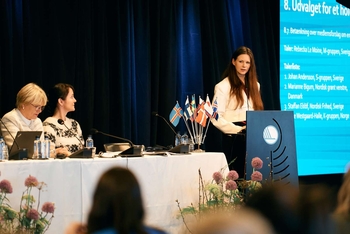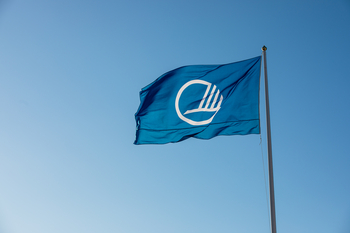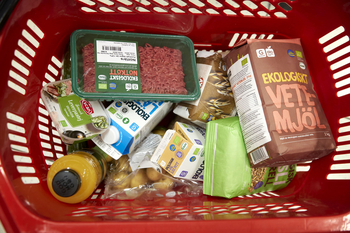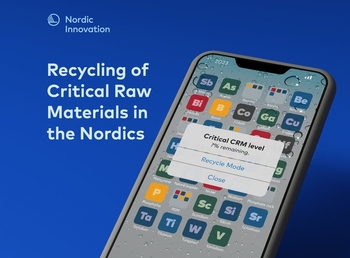Five principles for a sustainable bioeconomy in Nordic and Baltic countries
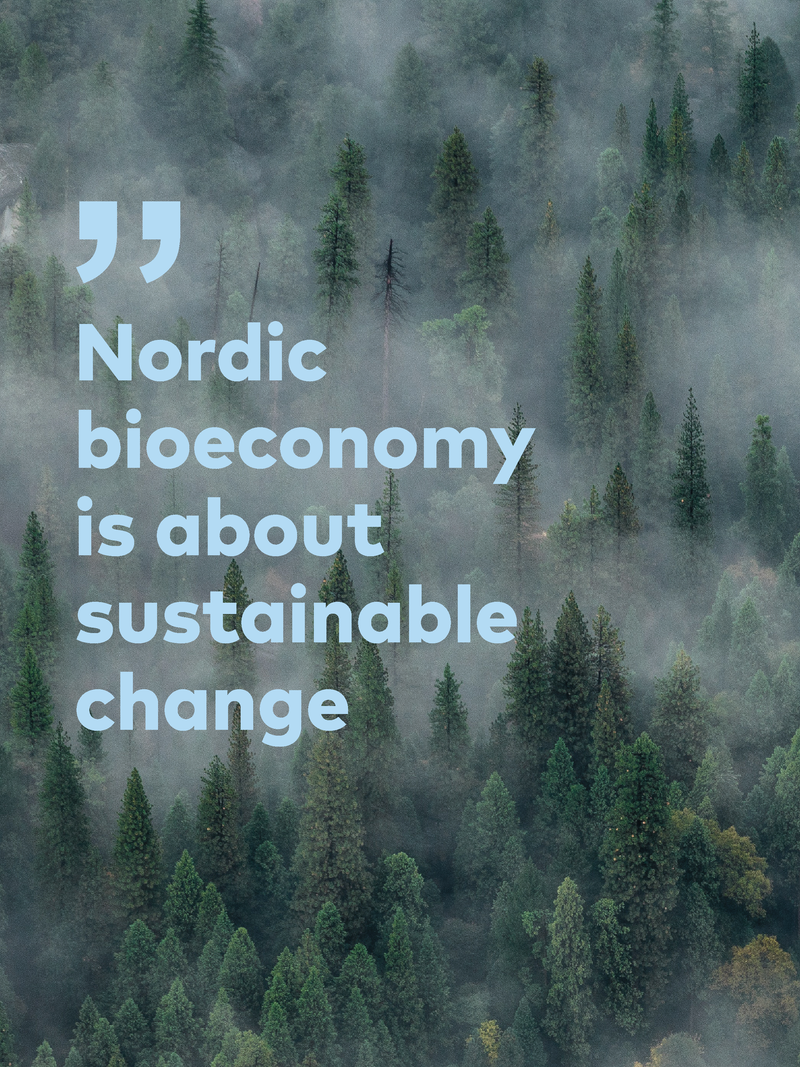
Why we need principles for a sustainable bioeconomy
The global population is projected to reach nine billion people in 2050, which according to the United Nations will necessitate a 50% increase in both food and energy production. This amplifies the challenge of securing basic needs whilst limiting the negative environmental impacts of human activities. As the bioeconomy encompasses a wide range of sectors, including energy, heat, construction, bioplastics, food and textiles, it holds great potential for contributing solutions to many of the challenges we face now and in the future.
However, not all bioeconomy activities are sustainable per se, and can have both positive and negative effects on the planet’s climate and biodiversity, depending among other aspects on whether resources are replenished with the same speed they are being utilized. This emphasizes the need for a clear set of principles that ensure a collective understanding among all stakeholders in the bioeconomy, bringing the climate, natural resources, social indicators and other important aspects into consideration when developing, supporting and scaling the bioeconomy.
A remaining challenge within the bioeconomy is the lack of consensus amongst stakeholders on what the concept of “sustainability” actually entails in connection to the bioeconomy. This underlines the continuous need for promoting a sustainable approach to the bioeconomy, including principles and examples. A common understanding of where we are now and the next steps is essential for ensuring that all necessary stakeholders push in the same direction while collaborating. Furthermore, with the 2015 adoption of both the Paris agreement and the Sustainable Development Goals – the world’s to do list for 2030 – countries, citizens and companies need to act more than ever before. The bioeconomy holds promise to deliver many of the solutions in the common quest to limit global warming and secure a fair, prosperous and equal world for all.
The proposed set of guiding principles is one step towards developing common ground and good practices for a sustainable bioeconomy in the Nordic and Baltic countries, with the aim of inspiring other regions to follow a similar path. The proposed principles can also act as a reference point for collaborations with other parties, such as national governments, FAO and the EU on strengthening the bioeconomy.
Besides having environmental and societal benefits, businesses within the bioeconomy can also get a competitive edge by following the principles, acting sustainably and resource-efficiently; providing inspiration to other industries, sectors and regions to follow the same path. This is the purpose of these proposed principles. They should not be seen as a set of commandments or an exhaustive recipe for transforming entire industries, but rather a tool for helping societies, businesses and people to steer in a sustainable direction.
Nordic Bioeconomy – 25 cases for sustainable change is a catalogue containing a selection of innovative bioeconomy cases from the Nordic countries, Greenland and the Faroe Islands. The 25 cases exemplify the four categories identified by the Nordic Bioeconomy Panel as strongholds of the Nordic bioeconomy: replace, upgrade, circulate and collaborate.Download the publication for free at: www.norden.org/25cases
The Bioeconomy in the Baltic Sea Region
The countries in the Baltic Sea Region share many similarities in terms of societal structure, well-developed infrastructure, and good performance on education, technology and innovation. Similarities also manifest when zooming in on the bioeconomy in the regions. The region is characterized with a large concentration of biomass from both land and sea. Whether the majority of the biomass is comprised of wood, fish or agricultural products varies from country to country. As such, each country has different focus areas, but with a common belief in the various economic, environmental, social and health-related opportunities arising from a strengthened bioeconomy.
Overall, the region has a high environmental skill and knowledge base, as well as many commercial interests that for a large part show good practices in the marine, agricultural and forestry sectors. Connecting this expertise with the abundant bio-based resources, the Baltic Sea Region can make an important contribution to reaching the Sustainable Development Goals and mitigating climate change through further developing the bioeconomy. By acknowledging the need for close cooperation between research institutions, authorities and the private sector, the region is well-equipped to address the challenges and act as a frontrunner, showing the benefits of an even stronger bioeconomy.
Five principles for a sustainable Nordic and Baltic bioeconomy
1. Sustainable resource management – responsible use of our shared resources
- Develop new technologies to increase output from harvested biomass through resource efficiency
- Upgrade residues and waste to higher value products and services to optimise the quality and value of biomass
- Contribute to circular bio-solutions that reuse and recycle materials throughout the value chain.
Case example:
Latvia – “Biolat” is making the most of residues from the logging industry in Latvia to produce new raw materials. Conifer needles and pine cones contain a lot of biologically active substances that Biolat is putting to use to create products that can replace synthetic materials and reduce risks to public health.
2. Food security and health – sufficient and nutritious food for all
- Support production and innovation in alternative proteins for both feed and food
- Improve general health and nutrition by developing new, sustainable and healthy food and pharmaceutical products
- Guarantee food security and safety for all.
Case example:
Faroe Islands – Ocean Rainforest/ BlueGreenFuture aims to develop a functional blue biorefinery, which will produce industrial and consumer commodities from sustainably cultivated seaweed. The solution can free valuable land for other uses, while the seaweed cultivation also has beneficial outcomes for the environment. Full industrial scale-up of the biorefinery to 10,000 tonnes of seaweed will sequester 4,300 tonnes of CO2, equivalent to the emissions from 2,600 households.
3. Resilient and diverse ecosystems – a liveable planet
- Support action to cut air pollution and reduce CO2 emissions throughout the value chain and refine renewable alternatives to fossil-based products and processes
- Enhance biodiversity both on land and below water
- Restore and sustain soil fertility, protect water quality by lowering usage and use proper purification processes for recycling.
Case example:
Denmark – Utilizing side-streams from Danish Crown meat production, a subsidiary is developing new high-protein ingredients for use in products from sausages to sports nutrition. Value is being found in other side-streams as well, with the development of iron-rich blood-based products for use in the pharmaceutical industry.
4. Inclusive economic and social prosperity – sustainable societies
- Create decent new jobs and retain existing ones, especially in rural and coastal areas
- Develop and share financially viable and sustainable business models
- Provide rural and urban areas with environmental, social and economic opportunities and encourage new partnerships – at local, regional, national and global levels.
Case example:
Iceland - Skagafjörður, the “Food Fjord” of Iceland, has traditionally been dominated by classic fisheries and agriculture. The transition to a knowledge-based bioeconomy means local companies are now hiring scientists to work on improved utilization and upgrade of marine raw materials. The establishment of a science park has supported substantial collaboration, new innovative companies, and the creation of hundreds of interconnected jobs across different bio-based industries. In response to the 30% reduction on the total allowable catch of cod, in 2007, the fjord Skagafjörður embraced the bioeconomy to generate new revenue streams.
5. Sustainable consumption – changing consumer behaviour
- Provide infrastructure that facilitates the reuse, recycling and upcycling of bio-based products
- Encourage green procurement in both the public and private sectors
- Commit to education and awareness of sustainable practices from kindergarten to university.
Case example:
In Latvia, new farms are being established to meet the demand from the newly founded Direct Buying Movement. The Direct Buying movement in Latvia is built on three basic values; friendship, voluntary work and organic agriculture. Part of the movement evolution is a web-based platform to simplify communication with farmers, automate routine processes and share consumer experiences on buying products from local farmers.
The Nordic bioeconomy is about a green transition. It is about the replacement of unsustainable and fossil-based resources, through the upgrading of side streams and waste, and by creating circular and sustainable local solutions. As a step towards a sustainable bioeconomy the Nordic Council of Ministers propose five principles to steer in a sustainable direction towards 2030. Music: Starchild by Mystery Mammal
Listed below are a number of initiatives and policy measures that might as well be able to drive change and business in the bioeconomy.
Targeted public procurement
It is now common among nations to introduce ambitious targets for renewable energy generation, helping to accelerate the green energy transformation. The bioeconomy could greatly benefit if public procurement policies also followed this path, prioritizing fossil-fuel-free products and materials. Through such mechanisms, the public sector could act as a demand-driver for sustainable bioeconomy goods.
Support bioeconomy clusters across the region
Industrial clusters are a well proven tool to facilitate development and innovation. Some examples of successful collaboration in this field already exist on a national level and can inspire new initiatives. The “SP Processum” cluster in Sweden on the biorefining of wood raw materials, the strategic Danish bioeconomy innovation platform “SPIR”, and the cross-sector “Digipolis” cluster in Finland are all good examples.
Fund or bonds for transformational bioeconomy projects
Establishing a cross-Nordic/Baltic fund for transformational bioeconomy startups that meet sustainable bioeconomy principles, could boost interest in establishing bio-based startups and help them scale. In the same context, new global financing instruments are being introduced in the light of the SDGs, the Paris Agreement and an increasing interest from the private sector in sustainable and responsible investments. Examples include green bonds, SDG bonds, and infrastructure and adaptation funds. The question is whether the bioeconomy can tap into one or more of these agendas, perhaps even by establishing “bioeconomy bonds” or something similar.
BSR startup contest
Nordic Cleantech Open is a Scandinavian cleantech startup competition run by Cleantech Scandinavia, which also runs a cleantech accelerator. This approach could be copied to a bioeconomy context where a cross BSR institution runs solution-focused challenges, contests and ‘hackathons’ with prizes to spur innovation, secure funding and create awareness around the startups in the field.
Eco-labeling
Building on the Nordic cooperative framework demonstrated in the environmental labeling initiative “The Swan”, the bioeconomy could also develop sustainability standards that products should strive for, for instance by certifying levels of sustainable content in products such as biofuels or plastics.
Standards announced years ahead
Many argue that EU has been successful in enforcing continuously higher standards for emission limits in the automotive sector. EU has announced these standards several years in advance, leaving the manufacturers proper time to adapt their production to the future legislation and demand. The same long-term approach could be translated to various areas within the bioeconomy, such as minimum standards for blending levels of sustainable content, or a cap on the amount of waste products from production.
Promotion
Could the bioeconomy in the BSR become its own brand? This could be inspired by the “New Nordic Food” approach that has attracted both tourists and investments, and spread across the world, or the current export of Danish urban water, adaptation and livability solutions. Perhaps “Nordic Nature” or “Bio from the Baltics” could represent a new global brand.
In 2016, the Nordic Council of Ministers and the Nordic Bioeconomy Panel collaborated with the Danish think tank Sustainia to develop five criteria on what constitutes a sustainable Nordic bioeconomy case. The criteria were presented in the publication Nordic Bioeconomy – 25 cases for sustainable change. Based on the criteria, Nordic Council of Ministers and Sustainia have worked to develop a proposal for general principles for a sustainable bioeconomy in the Baltic Sea Region. The work has been informed by a workshop session during the Baltic Sea Region Bioeconomy Council meeting in March 2017, including talks on how to include relevant Sustainable Development Goals in the criteria as well as FAO’s work in progress on overall principles for a sustainable bioeconomy. Based on inputs from the Nordic Bioeconomy Panel in May 2017, Nordic Council of Ministers and Sustainia have updated and expanded the brief to be presented at the Baltic Sea Region Bioeconomy Council meeting in October 2017. One final version of the brief is planned for COP23.
The Nordic Council of Ministers’ action plan for Vision 2030
The action plan describes how the Nordic Council of Ministers will work to achieve the objectives of the vision through a series of initiatives linked to the vision’s three strategic priorities: a green Nordic Region, a competitive Nordic Region, and a socially sustainable Nordic Region. There are 12 objectives linked to the strategic priorities. The strategic priorities and objectives govern all the activities of the Nordic Council of Ministers over the next four years. The action plan is divided into 12 sections, each one linked to one of the 12 objectives.
